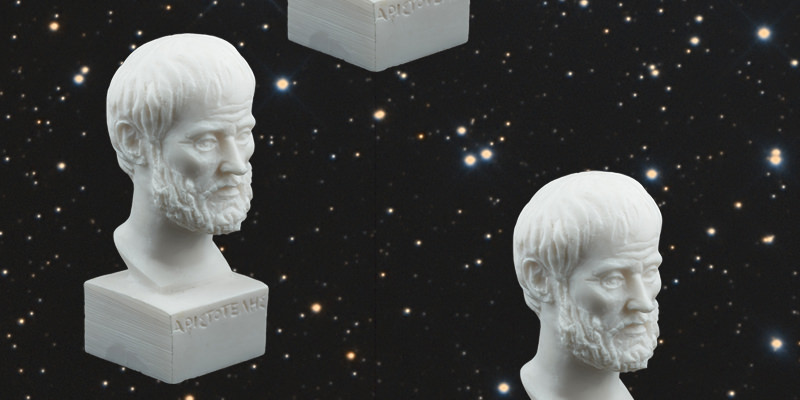The word “spirit” can mean many things. The Holy Spirit, for example, or everyone’s favorite Disney horse. But when it comes to drinking, spirit is a synonym for a very specific intoxicant: liquor.
The Oxford Dictionary defines spirit as a “strong distilled liquor such as brandy, whiskey, gin, or rum.” Merriam-Webster gets more specific by defining a spirit as “the liquid containing ethyl alcohol and water that is distilled from an alcoholic liquid or mash — often used in plural.”
So how did a word come to mean something both holy and wholly intoxicating? Like many things in the world of alcohol, it’s complicated, and there are many competing stories.
The first comes from the ancient world, all the way back in the 4th century B.C.
Aristotle felt possessed by spirits
In the “BarSmarts Advanced” handbook by David Wondrich, Dale DeGroff, and Paul Pacult, the term “spirits” for alcohol is attributed to Aristotle. “Aristotle wrote about this process in 327 B.C., but we have no proof that his fellow Greeks distilled spirits on any significant volume level,” the handbook reads. “Nonetheless, he was the one who gave the name of ‘spirit’ to the product of distillation. He thought drinking a distilled beer or wine put ‘spirits’ into the body of the drinker.”
But this explanation is suspect. If Aristotle was talking about spirits in the way we mean it, he would’ve used the word “pneuma,” which is ancient Greek for “breath,” “spirit,” or “soul.” In the New Testament, pneuma is most often translated as “spirit.” But distillation of alcohol wasn’t common in ancient Greece.
Another theory dates back to biblical times.
The Bible tells us so
The New Testament identifies five images for the Holy Spirit: a dove, tongues, fire, wind, and water. In Acts 2:13, the “first Pentecost bystanders mistook the effects of the Holy Spirit on the disciples as intoxication from too much new wine,” Michael Foley writes in OnePeterFive, a Catholic publication. In other words, the Holy Spirit is intoxicating like spirits, presumably without the hangover.
The relation between the Holy Spirit and the intoxicating spirit is an easy jump to make here. It isn’t explicitly laid out, however, so it’s up for interpretation.
Which brings us to the third explanation — back to the very beginning of distillation.
Liquor is the spirit of alcohol
Alchemists in the Middle East were the first to master distillation. They weren’t only trying to find gold, either. They were also trying to make medical elixirs. To do so, they would distill liquid, collect the vapor, and gather the “spirit” that came off the material.
A Franciscan monk named Roman Llull is considered one of the first people to use distillation purely for alcohol, Dane Huckelbridge writes in “Bourbon: A History of the American Spirit.” “In his journals, he is the first to pen specific formulas for ‘loosening’ the alcohol from wine (for scientific purposes of course),” Huckelbridge writes.
Liquor is a base alcohol that has the water physically taken out through the process of distillation, which increases the alcohol concentration through evaporation. Then the alcohol is condensed down. In other words, the spirit of the liquor is leaving the lower alcohol base liquid, then coming back down in a purer form to drink. So we’re drinking the spirit of fermented liquid.

